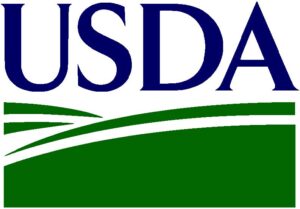WASHINGTON, Jan. 31, 2007 – Agriculture Secretary Mike Johanns today unveiled the U.S. Department of Agriculture’s 2007 farm bill proposals. The more than 65 proposals correspond to the 2002 farm bill titles with additional special focus areas, including specialty crops, beginning farmers and ranchers, and socially disadvantaged producers.
“We listened closely to producers and stakeholders all across the country and took a reform-minded and fiscally responsible approach to making farm policy more equitable, predictable and protected from challenge,” said Johanns. “We started with the 2002 farm bill and propose to improve it by bolstering support for emerging priorities and focusing on a market-oriented approach.”
USDA began preparations for the 2007 farm bill in 2005 by conducting 52 Farm Bill Forums across the country. More than 4,000 comments were recorded or collected during forums and via electronic and standard mail. These comments are summarized in 41 theme papers. USDA economists, led by Dr. Keith Collins, studied the comments and authored five analysis papers.
The proposals unveiled today represent the final phase of a nearly two year process. Each detailed proposal provides information about why a change is needed, the recommended solution, and relevant background information about the impacted program or policy.
Highlights of the proposals include (funding reflects ten year totals):
-Increase conservation funding by $7.8 billion, simplify and consolidate conservation programs, create a new Environmental Quality Incentives Program and a Regional Water Enhancement Program
-Provide $1.6 billion in new funding for renewable energy research, development and production, targeted for cellulosic ethanol, which will support $2.1 billion in guaranteed loans for cellulosic projects and includes $500 million for a bio-energy and bio-based product research initiative
-Target nearly $5 billion in funding to support specialty crop producers by increasing nutrition in food assistance programs, including school meals, through the purchase of fruits and vegetables, funding specialty crop research, fighting trade barriers and expanding export markets
-Provide $250 million to increase direct payments for beginning farmers and ranchers, reserve a percentage of conservation funds and provide more loan flexibility for down payment, land purchasing and farm operating loans
-Support socially disadvantaged farmers and ranchers by reserving a percentage of conservation assistance funds and providing more access to loans for down payments, land purchasing and farm operating
-Strengthen disaster relief by establishing a revenue-based counter-cyclical program, providing gap coverage in crop insurance, linking crop insurance participation to farm program participation, and creating a new emergency landscape restoration program
-Simplify and consolidate rural development programs while providing $1.6 billion in loans to rehabilitate all current Rural Critical Access Hospitals and $500 million in grants and loans for rural communities to decrease the backlog of rural infrastructure projects
-Dedicate nearly $400 million to trade efforts to expand exports, fight trade barriers, and increase involvement in world trade standard-setting bodies
-Simplify, modernize, and rename the Food Stamp Program to improve access for the working poor, better meet the needs of recipients and States, and strengthen program integrity
The Administration’s 2007 farm bill proposals would spend approximately $10 billion less than the 2002 farm bill spent over the past five years (excluding ad-hoc disaster assistance), upholding the President’s plan to eliminate the deficit in five years. These proposals would provide approximately $5 billion more than the projected spending if the 2002 farm bill were extended.
The proposals are available at www.usda.gov/farmbill. Also posted on USDA’s website are the Farm Bill Forum transcripts, farm bill comments submitted by the public, theme papers summarizing the comments and USDA analysis papers.
USDA Secretary Unveils 2007 Farm Bill Proposals
Introduction to the 2007 Farm Bill
Every five years Congress is charged with drafting a new Farm Bill. Actually titled the Farm Security and Rural Investment Act, the Farm Bill is an omnibus bill that includes many of the laws, policies and provisions that govern federal farm support, food assistance, agricultural trade, marketing, and rural development for the entire country. While many would argue that much of the Farm Bill is outdated it is more common that any new Farm Bill is actually a fine-tuning of the existing document. The sheer size and number of programs included pretty much guarantees that the document will never be rewritten from scratch.
What surprises many of us is how broad the Farm Bill is—it covers much more than farm policy. The current Farm Bill is broken into ten titles, with each title being a chapter that is roughly organized by a general policy theme.
The most hotly debated item in every Farm Bill is Title I, the Commodity program, which specifies direct payment and production marketing loans for select products. The hot issue in every recent Farm Bill debate is the provision that nominally limits annual crop payments to $360,000 per person.
Title II of the Farm Bill addresses Conservation programs designed to help farmers adopt environmentally beneficial farming practices. A partial list of the programs includes the grasslands reserve program, EQIP, the conservation security program and a host of programs protecting wetlands, wildlife and environmentally sensitive land.
Title III, the Trade policy covers export programs but also includes foreign food aid and the International Food for Education and Child Nutrition.
Nutrition Programs, Title IV of the Farm Bill, covers domestic nutrition programs such as the food stamp program, emergency food assistance, and the commodity supplemental food program. The intent of these policies is to ensure food security for all by getting food to those unable to purchase it at the market price.
Title V, the Credit title, authorizes funding levels for farm credit programs which provide funds for both direct loans and guaranteed loan programs. This title is particularly important in the ongoing debate of how farmland can best be transferred to a new generation of farmers without unduly disadvantaging either the exiting farmer or the beginning farmer.
The Rural Development Title, Title VI, includes the value-added ag market development grant program, rural infrastructure such as broadband services, municipal water and septic projects as well as the Rural Business Investment Program.
Title VII, the Research and Related Matters title, funds university research programs as well as the cooperative extension program. Each Farm Bill designates certain areas as priority topics but the Congressional appropriations actually dictate much of what can be accomplished.
Title VIII, Forestry creates programs to help private forest landowners manage their forests sustainably but this title also includes assistance to local governments for fighting wildfires.
Title IX, the Energy title, was added in the last Farm Bill. It covers programs related to bioenergy, renewable energy grants for farmers to improve their energy efficiency.
The final title, Title X, Miscellaneous is the catchall title for a wide variety of programs that include country of origin labeling, animal health protection laws, appropriations for socially disadvantaged farmers, and biotechnology education.
For the past year, USDA has been gathering broad input on what the next Farm Bill should contain. Thousands of individuals have already weighed in on a variety of issues ranging from how best to support beginning farmers to what the priorities should be for rural communities.
If you would like to review the comments that were recieved or read some of the resulting white papers, you can do so via the USDA Farm Bill Forums website at http://www.usda.gov/farmbill. The website will continue to be updated so log on today and join in on the debate that will result in the next Farm Bill.
Eating Local and the Farm Bill
In the coming months there will be a lot of discussion as the next Farm Bill begins to take shape. In the following podcast from NPR Science Friday you can hear some thoughts about some of the benefits and challenges of supporting local farmers with our consumer dollars. As you listen maybe you’ll come up with some strategies on how the next Farm Bill could support local food initiatives.
Eating locally—experts say there’s a downside to our global grocery shopping.
powered by ODEO






